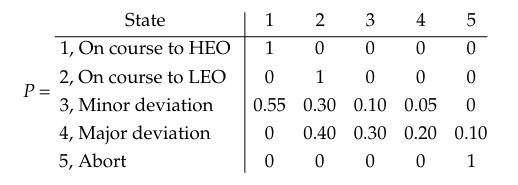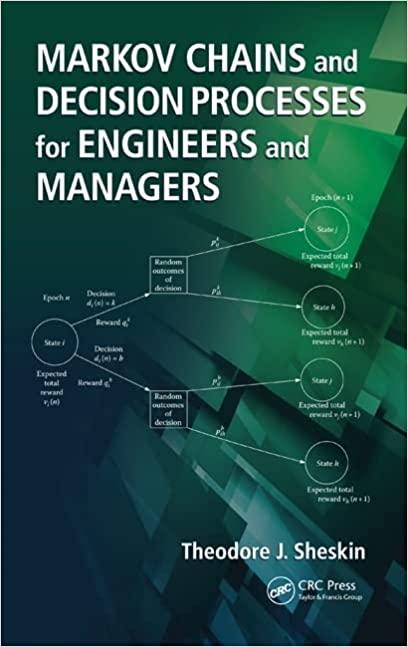An unmanned expendable rocket is launched to place a communications satellite in either high earth orbit (HEO)
Question:
An unmanned expendable rocket is launched to place a communications satellite in either high earth orbit (HEO) or low earth orbit (LEO). HEO is the preferred destination. As the rocket is tracked, a sequence of course correction signals is sent to it. The system has fi ve states, which are labeled as follows:

Assume that the system can be modeled by an absorbing Markov chain in which states 1, 2, and 5 are absorbing, and states 3 and 4 are transient. The state of the system is observed after the nth course correction. Suppose that the five-state absorbing multichain has the following transition probability matrix:

(a) Represent the transition matrix in canonical form.
(b) If, upon launch, the rocket is observed to start in state 3, find the probability that it eventually gets on course to LEO.
(c) If, upon launch, the rocket is observed to start in state 4, find the probability that it eventually gets on course to HEO.
(d) If, upon launch, the rocket is observed to start in state 3 with probability 0.8 or in state 4 with probability 0.2, find the probability that it eventually gets on course to HEO.
(e) If, upon launch, the rocket is observed to start in state 3 with probability 0.8 or in state 4 with probability 0.2, find the probability that the mission will eventually be aborted.
(f) If, upon launch, the rocket is observed to start in state 4, find the probability that it will be in state 3 after three course corrections.
(g) If, upon launch, the rocket is observed to start in state 3, find the mean number of course corrections before it reaches HEO or LEO or aborts.
Step by Step Answer:

Markov Chains And Decision Processes For Engineers And Manager
ISBN: 9781420051117
1st Edition
Authors: Theodore J. Sheskin





